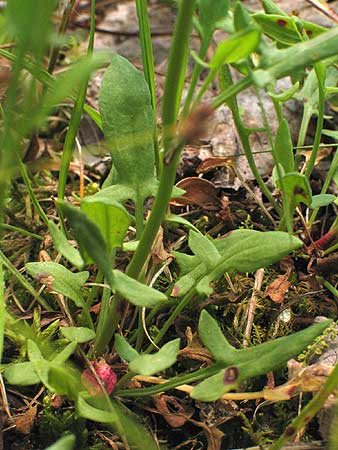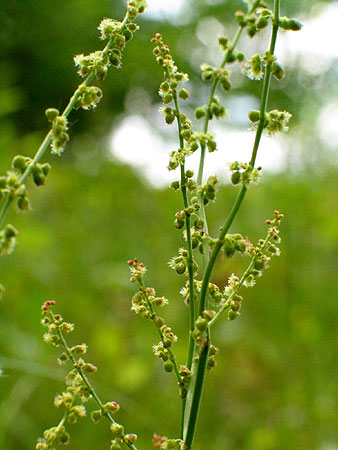The flowering stalks of these plants can be half as long as the plant. The flowers are nodding on short, jointed pedicels. The male flowers are yellowish in color and the obovate inner tepals measure 1.5-2 mm (0.06-0.08 in.) in size. The female flowers are reddish in color and the tepals are broadly ovate in shape. The flowers appear on this plant from late May to June. The shiny, golden brown achenes of this plant are 3-angled and measure around 1.5 mm (0.06 in.) in length. The fruit are present on the plant from June-October.
REPRODUCTIVE/DISPERSAL MECHANISMS
Rumex acetosella can reproduce both vegetatively as well as by seed. Vegetative spread is by means of creeping rhizomes. The seeds are dispersed by both wind and insects.
DISTRIBUTION
Rumex acetosella is native to most of Europe, Russia, the Middle East and North Africa. In the United States, it has been reported from all the states.

HISTORY OF INTRODUCTION
It is not known exactly how this plant made its way into New England. It was listed as one of the "worst weeds" in 1889. In 1890, Rand mentions the plant travels "in the footsteps of man" when he found it at the Rangely Lakes in Maine. It was mostly found by logging camps in the woods. Likely it came over in the fur of livestock from England or by some other accidental means.
 Field or Sheep Sorrel
Field or Sheep Sorrel